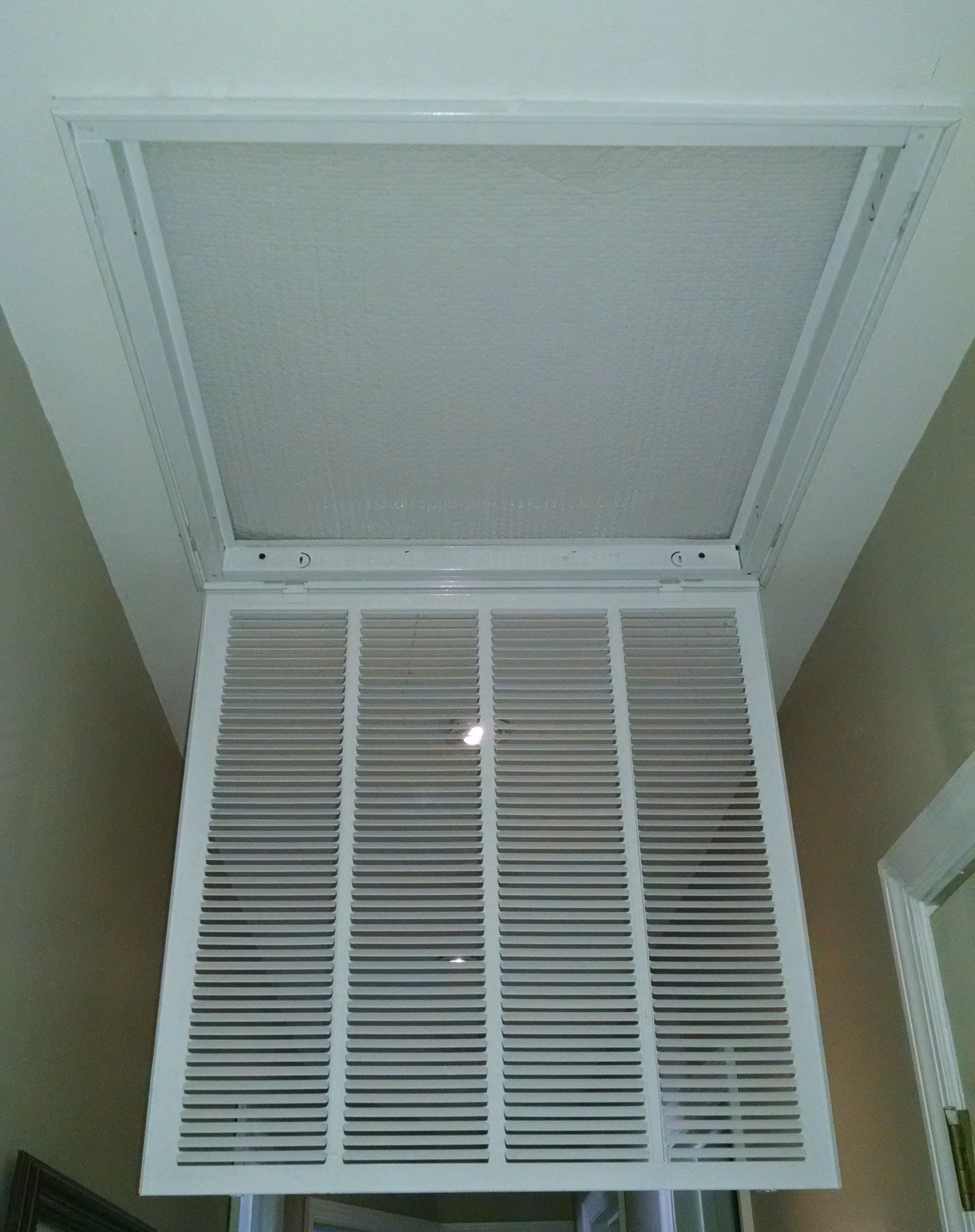Return Air Vent: The Essential Component of Your HVAC Syste
Homeowners make a huge mistake by only focusing on their thermostat, furnace, or air conditioner when discussing heating, ventilation, and air conditioning (HVAC). A Return air vent that must be paid attention to are regularly disregarded. Whatever the case may be, now understanding what return air vents do, how they work, and most importantly why they are important can take your HVAC experience to the next level. At Premier Comfort Solutions, we believe effective use and maintenance of all system elements including return air vents will enhance energy efficiency and comfort.
In What Common Language is a Return Air Vent Defined?
The seepage or flow of air through a return air vent to the HVAC system is reversed in simple terms. The return vents’ primary purpose is to pull air back from your house when the supply vents blow air into the rooms. This filtered recycled air is then reintegrated into the now closed system. However, the purpose of these two systems is to maintain equilibrium in air circulation, thereby centralizing temperature control in the house and allowing the users to maintain their comfort settings.
In terms of size, return vents are usually larger than supply vents and are located centrally within the room or hallway. They are fitted with grilles instead of having louvers that can be adjusted in any direction. Since return air vents operate non stop, they are definitely important components in the provision of air circulation in your household.
What is the Purpose of a Return Air Vent?
Outdoor air is brought into an air conditioning system and conditioned air returns back to the system, there’s a common return air vent that therefore needs to be installed, for example:
Supply airflow: setting the thermostat to a certain temperature smartly directs the HVAC system to either heat or cool the air until that certain temperature is achieved. An HVAC system then distributes the conditioned air through the supply vents into the rooms.
Return airflow: return air vents collect the conditioned air that has been supplied to a room for some time. This air has become warmer and has been unequally distributed across the room, which is why it’s drawn back into the HVAC system. From there, its cooled, heated or filtered again.
Air filtration: When air is pulled back into the HVAC system through the return vents, it goes through the filter that captures dirt, allergens, and other particulates. This purified air is then processed and sent back into the system through supply vents which makes the operation, a perfect cycle.
Your HVAC system wouldn’t be able to move air around the house properly and would lead to temperature imbalances, excessive costs, and unhealthy air. Therefore, all HVAC systems have air return vents that take air back into the unit and allow the appliance to work properly.
What are the Benefits of Return Air Vents?
At first glance, return vents may seem like nothing more than grilles but they greatly impact the HVAC system’s operation and efficiency. Here’s how:
- Operability of the system
When air is expelled out the vent, return vents help in taking that air back into the system in a balanced manner. This balance prevents any kind of unnecessary pressure in the ducts which would only harm the HVAC system rather than help it. With a average return airflow, you’ll be able to maintain the same everyday routines in your house without having to increase your energy bills. That’s a win-win.
- Increased comfort
Having constant temperatures across your household is one of the major benefits of a properly functioning return air system. If the return air vents are clear and unobstructed, then the conditioned air would be able to pass through more easily, which would help to avoid hot or cold pockets in some places throughout the house. This leads to the ideal temperature where every room feels just right.
- Better Indoor Air Quality (Check Out: Is Duct Cleaning a Waste of Money?)
Return air vents are crucial components for indoor air quality. They make it possible for air to be exhausted back to the HVAC system, in which case it can go through the filter where dust, pollen, and other impurities are trapped. If there is no return air, the air within the house can become stagnant and contaminated with particles and this would worsen health especially for those with allergies or breathing problems.
- Longer HVAC System Life
Blocking return air vents or placing them in the wrong place greatly affects system performance. Placing them properly and unblocked allows the system to operate under reduced load. Return vents act to keep the airflow balanced which decreases the working time of parts like the blower motor and the compressor thereby increasing the lifespan and cutting down overheads on repairs.
Typical Problems Associated with the Return Air Vents
Return air vents, like any other component of an HVAC, do have some common issues that beset their effectiveness. As a result, the HVAC system’s overall performance can be negatively impacted. Here are a few common problems you might encounter:
- Return Air Vents Are Blocked
One of the most frequently encountered problems is that of blocked air return vents. Couches, curtains, and other furniture may block vents resulting in a lack of air being returned to the system. This results in decreased airflow, more use of the HVAC unit, and dissatisfaction due to uneven temperatures across a room or space. Make sure that the areas surrounding your return vents are unencumbered and have sufficient volume to facilitate effective airflow.
- Filters That Are Clogged
As the return air vents are capable of sucking air which is then dispersed back into the space after passing through multiple filtration processes, it is quite possible that if the filter gets clogged, the efficiency of the heat system can be adversely affected. There is less airflow across the filter because it is dirty, and this forces the system to expend more energy in order to suck air back. Your airflow filters should be changed regularly if you want the return air vents of your system to work properly as well as the entire system.
- The Decrease In The Count of Return Vents
In many houses, particularly old ones, the presence of return vents is insufficient to achieve equal and balanced airflow. A shortage of return vents means that some rooms can be under-conditioned leading to hot and cold surfaces. Such scenarios can also increase energy consumption since the system works doubly hard to achieve the set temperature condition.
- The Misalignment
Inappropriately placed return vents can upset the air circulation pattern and lower the efficacy of the system. Best practice shows that return vents should be placed close to the center on the wall of every room and on every level in the building for optimum air circulation. In cases you experience low temperatures and high degree of temperature variation, having an HVAC acquaintance look into your location of vents may be prudent.
How To Care For Your Return Air Vents
Due to the fact that properly maintained return air vents will prevent unnecessary stress on your HVAC system, always try to do regular maintenance on them. These maintenance procedures if followed will help in ensuring functionality is not compromised:
- Avoid Any Blockages to the Vents
Ventilation systems need lots of space or air in order to work properly. Blockages that can restrict airflow near return air vents are a major concern as well. Items such as furniture and rugs or any other items should be kept away straight from the vents.
- Maintain Regular Vent Cleaning
Vent covers can become clogged with the build-up of dust and other particles of debris, which can limit the amount of air that flows through them and can also lead to dust particles being recycled into the atmosphere. It is advisable to use vacuum cleaners or damp cloths in order to wipe and keep vent covers clean and free from any dust particles on a regular basis.
- Make Sure to Change Air Filters
Return vents are always in charge of sucking air and this makes it clear that the HVAC filter needs to be changed to maintain a steady airflow and improve the quality of air. Whenever you have installed an air filter, it is wise to change it after every two to three months depending on how much filtration is required, and if you have any pets or suffering from allergies.
- Check the Location of the Vent
If you are noticing uneven temperatures in certain zones or an imbalance in airflow, maybe it is time to contact a professional and review return vent locations in your system. You may need more return vents to be added or some to be turned for the vents to work efficiently.
- Have Your HVAC System Serviced Regularly
Probably the best way to ensure your system and your return air vents in particular, are functioning at optimal levels, is to allow an HVAC technician to carry out routine maintenance on the system. On maintenance appointments, a technician is able to check, clean and tune your HVAC system as well assist in solving existing problems to ensure everything is in order.
How Premier Comfort Solutions Can Contribute
As a premier heating and cooling company, Premier Comfort Solutions appreciates that one of the most important aspects of any building is its HVAC system. Our qualified personnel work with your HVAC system, your return air vents included, to keep it in optimal condition. If your household is experiencing any airflow problems, rooms that are colder or warmer than usual, or your energy bills are higher than normal, it may be worthwhile looking into the air return setup.
The HVAC systems do not have to be a burden to the homeowners. We offer complete HVAC services such as evaluation of the systems, maintenance, and fixing of the systems. Call us now to book an appointment and we can begin working on improving your HVAC systems.


